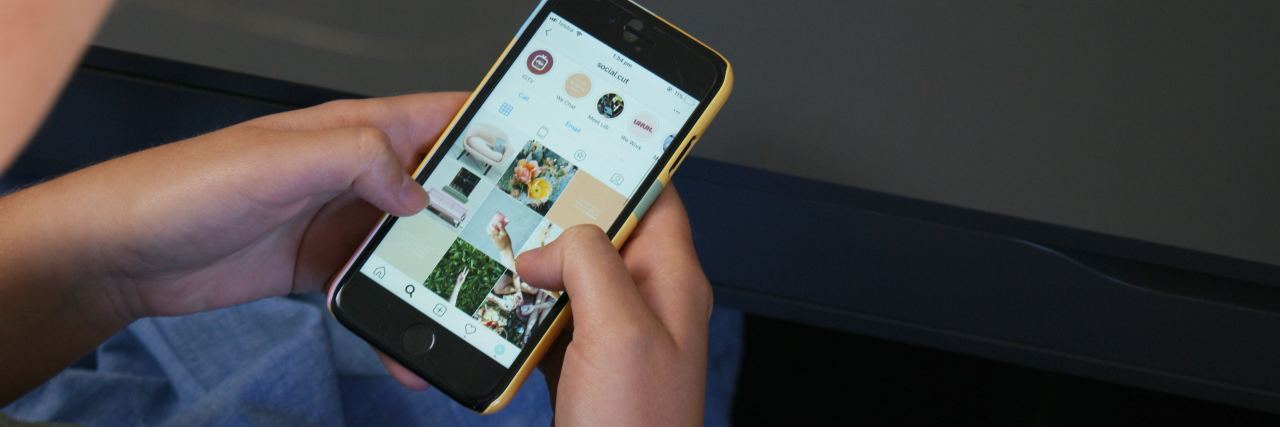Instagram Blurring Self-Harm Images Is Just the Start of What Needs to Change
Editor's Note
If you struggle with self-harm or experience suicidal thoughts, the following post could be potentially triggering. You can contact the Crisis Text Line by texting “START” to 741741. For a list of ways to cope with self-harm urges, visit this resource.
Following Molly Russell’s death in 2017, Instagram has been strongly encouraged and strong-armed to change its algorithms in order to prevent graphic imagery of self-harm, as well as suicide content being displayed to users in such a way that they can easily find more.
Now, don’t get me wrong — Instagram’s decision and effort to change is hugely significant. This will help to protect vulnerable and mentally unwell people from being exposed to damaging content. It is a necessary and important step. However, it’s not the be-all and end-all. The problem is bigger than Instagram.
Instagram can do better and it does finally seem like they are going to make changes accordingly. But what about all the other platforms?
If you Google “how to kill yourself,” you can find answers to the question (or even statistics about what is the most effective) without jumping through many hoops. When you Google it, you are presented with the Samaritans phone number and links to an NHS website (at least in the UK) but, unlike Instagram, a box doesn’t appear forcing you to make a conscious choice to view the information. In the case of self-harm, images appear without any effort whatsoever. So, surely this makes Google just as bad, if not worse than Instagram. Why isn’t Google being pressured into changing as well?
Obviously, Google doesn’t have a “community” in the same way as Instagram, but it’s just one example of where things fall short.
Join the conversation.
Respond to this Mighty Member’s call for support.
The reality is that the problem is even bigger than Instagram, any other social media platform or even the internet itself. Sure, it’s making the problem worse, but Instagram can’t be forced to take all the blame. It’s society. Why is it people feel able to express themselves through posting these images online? Why is this the outlet people turn to? Surely these are the questions we should be asking. Are they harder questions to ask? Yes. Do they have any easier answers? No.
But they actually delve into the problem instead of just focusing on the surface.
The reality is that people, real people, are crying out for help. People are hurting. They are your friends, family members, classmates, work colleagues, people you sit next to on a bus and people you walk past in a supermarket. And stopping them from using Instagram or something similar to cry out for help won’t solve the problem.
We have to listen. Simply removing the images isn’t actually going to help people. However, simply letting social media platforms and the internet generally continue to exist in this way isn’t going to help either. It is true that it exacerbates the situation but, at the same time, what about all the people who are crying out for help and not getting any? We need to help them, and if these people are helped to express themselves and cry out for help in healthier ways that actually helps them in their recovery, then there will inevitably be less of these images.
This should be our priority. Instagram does need to change, but as a society, we can’t just brush everything else under the carpet and pretend Instagram is the big bad wolf. Instagram cannot be the scapegoat for a problem that extends way beyond these graphic images.
Maybe if Instagram’s pop-up simply gave links to websites that provide information and opportunities to chat confidentially to someone, then we can use the internet to help. It’s not a perfect solution by any means, but we have to start somewhere.
I have turned to Instagram and have found solace in this community before. Life is not simple. It is messy. Self-harm feels like a solution and experiencing mental pain that drives you to inflict physical pain is not a problem Instagram alone can fix. I struggle with self-harm. It is a battle I have to fight every day. Asking for help fills me with shame, and I’m not alone. There is a sense of relief in knowing you are not alone.
So, how about we don’t see Instagram as the big bad wolf? It’s not perfect, for sure, but we can all do things to make it more socially acceptable to ask for help and to provide ways for people to reach out without shame.
Photo by S O C I A L . C U T on Unsplash


